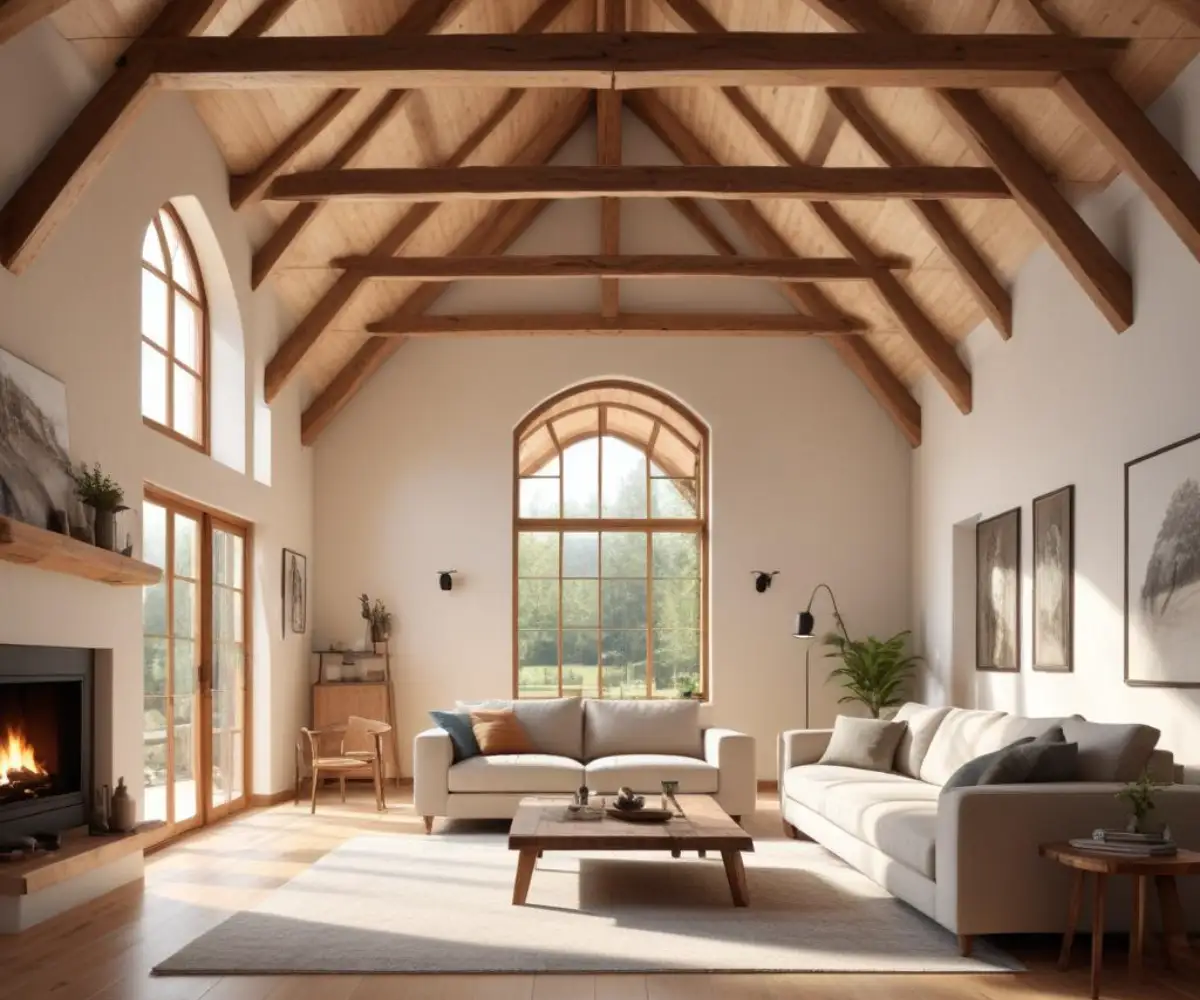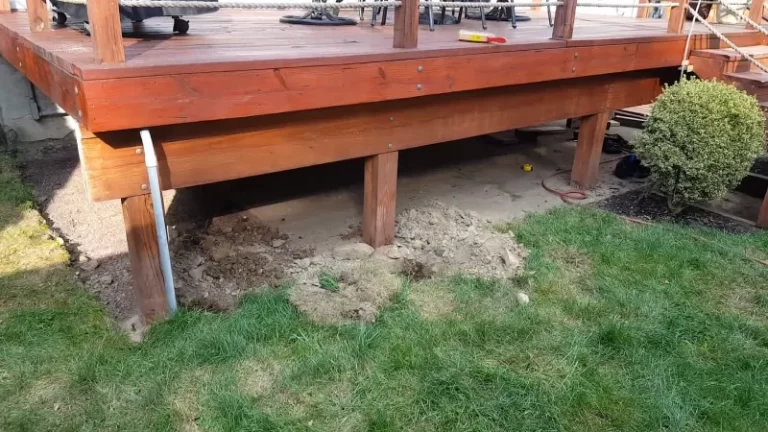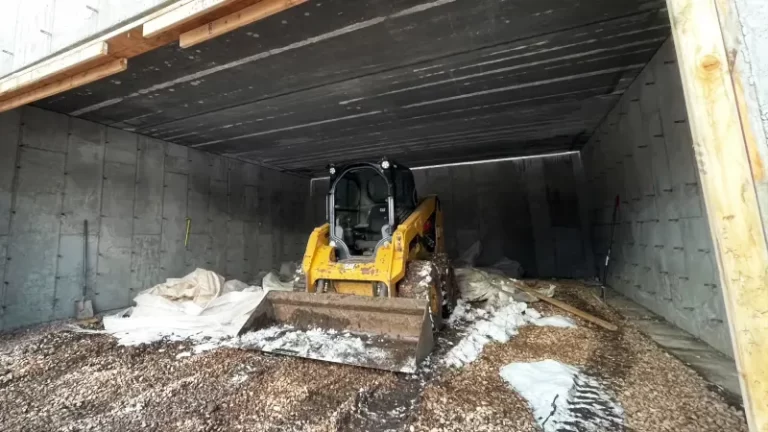Cost to Raise 8-Foot Ceilings: The Shocking Truth About Your Final Bill
That standard eight-foot ceiling, a hallmark of post-war construction, can often feel more like a lid on your living space than a protective roof. It can make rooms feel smaller, darker, and more dated than they actually are, leaving you craving a sense of openness and modern luxury.
Many homeowners dream of soaring, airy ceilings, but the path to achieving that dream is often shrouded in mystery and financial uncertainty. The core problem is understanding whether this massive undertaking is a sound investment or a financial black hole. This guide will illuminate the entire process, from initial costs to final results.
You'll Learn About
Why Low Ceilings Are a High-Priority Problem
An eight-foot ceiling was the standard for decades, primarily because it was cost-effective for builders. It minimized material costs for studs and drywall and made heating and cooling spaces more efficient. However, modern design sensibilities have shifted dramatically towards open, voluminous spaces that promote a feeling of well-being and luxury.
Low ceilings can negatively impact a home’s atmosphere, making it feel cramped and even affecting the mental health of its occupants. They also limit design choices, from the type of light fixtures you can install to the scale of the furniture you can use. This limitation is a significant pain point for homeowners looking to modernize and personalize their space.
The True Cost of Raising Ceilings: A Detailed Breakdown
Embarking on a project to raise your ceilings is not a simple cosmetic update; it’s a major structural renovation. The costs can vary wildly, from $15,000 to well over $100,000, depending on the complexity of the job. Understanding where that money goes is the first step toward a realistic budget.
The final invoice is a sum of many parts, including highly skilled labor, structural materials, and often-overlooked administrative fees. Neglecting any one of these areas can lead to significant budget overruns and project delays.
Labor Costs: The Biggest Piece of the Pie
Expect labor to account for a significant portion of your budget, often 50% or more. This is not a weekend DIY project. You will need a team of qualified professionals, including a structural engineer, an architect or designer, a general contractor, carpenters, electricians, and drywall specialists.
The structural engineer is non-negotiable. They will assess your home’s structure to determine if raising the ceiling is even possible and design the new support system. Their fees alone can range from $500 to $2,500 or more, depending on the project’s scope.
Material and Finishing Costs
Materials go far beyond just drywall and paint. Depending on the method used, you may need new lumber for collar ties or rafters, steel beams for support, new insulation, and extensive electrical wiring. All these components add up quickly.
After the structural work is done, the finishing phase begins. This includes hanging and finishing new drywall, a task where a product like a quality plaster finish can make all the difference for a seamless look. You’ll also need to budget for primer, paint, new light fixtures, and potentially new trim or molding to complete the look.

Permits and Hidden Fees: The Unexpected Expenses
Because this is a major structural change, you will absolutely need building permits from your local municipality. The cost of permits can range from $500 to over $2,000. Attempting this work without the proper approvals can lead to massive fines and legal trouble. You might even find that some unpermitted electrical work voids home insurance, a risk no homeowner should take.
Other potential costs include debris removal, temporary housing if you need to move out during the most disruptive phases of construction, and potential HVAC modifications. Your heating and cooling systems may need to be rerouted or even upgraded to handle the new, larger-volume space effectively.
Key Factors That Drastically Influence Your Final Bill
No two ceiling-raising projects are the same. The unique characteristics of your home will play the most significant role in determining the final cost. A contractor’s initial estimate can balloon once they uncover the specifics of your home’s construction.
Your Home’s Roof Structure: Trusses vs. Stick-Framing
The single most important factor is your roof’s framing. Homes are typically built with either a traditional “stick-frame” roof or a modern truss system. This distinction will make or break your budget.
A stick-framed roof is built piece by piece on-site, with individual rafters and ceiling joists. Modifying this system is complex but generally more feasible. The ceiling joists can often be raised or replaced with new supports to open up the space.
A truss system, however, is a pre-engineered web of interconnected triangles. Every component of a truss is critical to its structural integrity. You cannot simply cut into or alter a truss without compromising the entire roof structure. Modifying a truss system requires extensive re-engineering, is significantly more expensive, and is often prohibitively so.
Project Scope and Finishing Touches
The size of the area you plan to renovate will obviously impact the cost. Raising the ceiling in a single 15×15 foot room will be far less expensive than transforming the entire top floor of your house. The more walls that need to be altered and the more electrical and HVAC systems that need to be rerouted, the higher the cost.
Your choice of finishes also plays a role. High-end recessed LED lighting, complex paint jobs, and custom millwork will add to the budget. It’s crucial to factor these aesthetic choices into your initial financial planning.
Comparing the Main Methods: Raising the Roof vs. Interior Remodeling
There are generally two primary approaches to gaining more ceiling height. One involves removing the roof entirely, while the other focuses on reconfiguring the space from within the attic. Each has distinct advantages and cost implications.
Raising the Entire Roof
This is the most drastic and expensive method. It involves detaching the entire roof structure from the walls, using hydraulic jacks to lift it to the desired height, and then building new, taller walls in the gap. This is a massive undertaking reserved for whole-home renovations and often costs $70,000 or more.
Vaulting or Modifying the Ceiling Joists
A more common approach is to remove the existing flat ceiling and re-engineer the space below the roof rafters. This creates a sloped or “vaulted” ceiling. The existing ceiling joists, which also serve to tie the exterior walls together, must be replaced with a new structural system, such as collar ties placed higher up or a large structural ridge beam.
This method confines the work to the interior, avoiding the complexity of removing the roof. However, it still requires significant engineering and construction expertise. The cost for this type of project typically falls in the $20,000 to $45,000 range for a moderately sized room.
Cost vs. Benefit: Is Raising Your Ceilings a Smart Investment?
Beyond the raw numbers, the real question is whether the immense cost and disruption are worth it. The answer depends on your long-term goals, your local real estate market, and the value you place on your daily comfort and enjoyment of your home.
Return on Investment (ROI)
From a purely financial perspective, raising ceilings can be a good investment. It can significantly increase your home’s resale value, as high ceilings are a highly desirable feature for modern buyers. While you may not recoup 100% of the cost, it can make your home sell faster and for a higher price than comparable homes with standard-height ceilings.
However, the value-add is highly dependent on your neighborhood. If all the homes in your area have eight-foot ceilings, being the only one with ten-foot ceilings could make your property stand out significantly. Conversely, if higher ceilings are the norm, not making the upgrade could put you at a disadvantage.
The table below provides a sample cost breakdown for a hypothetical project involving vaulting the ceiling in a 20×20 foot living room with a stick-framed roof.
| Expense Category | Estimated Cost Range | Key Details |
|---|---|---|
| Structural Engineer/Architect | $1,500 – $3,500 | Includes initial assessment, creating structural plans, and inspections. |
| Permits and Fees | $800 – $2,000 | Varies greatly by municipality. Non-negotiable for structural work. |
| Demolition and Debris Removal | $1,200 – $3,000 | Safe removal of old ceiling, insulation, and any non-load-bearing elements. |
| Structural Carpentry (Labor & Materials) | $8,000 – $15,000 | Installing new collar ties or a structural ridge beam. This is the core of the project. |
| Electrical Work | $2,000 – $4,500 | Rerouting wires, installing new junction boxes, and fitting new lights. |
| Insulation | $1,000 – $2,500 | Upgrading insulation in the new, larger ceiling cavity. |
| Drywall and Finishing | $3,000 – $6,000 | Hanging, taping, mudding, and finishing new drywall. A smooth finish like Thistle Multi Finish is key here. |
| Painting | $1,500 – $3,000 | Primer and multiple coats of paint for the new ceiling and potentially walls. |
| Estimated Total | $19,000 – $39,500 | Does not include unforeseen issues or high-end custom finishes. |
The Psychological and Quality of Life Return
Perhaps the most significant return isn’t financial but emotional. Transforming a cramped, dark room into a bright, open, and airy space can fundamentally change how you feel in your own home. The feeling of spaciousness can reduce stress and create a more welcoming environment for family and guests.
This “quality of life” ROI is impossible to quantify but is often the primary motivator for homeowners who undertake this project. The daily enjoyment of a more beautiful and comfortable living space is a powerful benefit that lasts as long as you own the home.
Can’t Afford a Full Renovation? How to Create the Illusion of Height
If a six-figure renovation isn’t in the cards, don’t despair. You can use several powerful design tricks to make your eight-foot ceilings feel significantly taller, creating a more open feel for a fraction of the cost.
Strategic Painting Techniques
Paint is your most powerful tool. Paint the ceiling a crisp, bright white to make it recede. For an even more dramatic effect, use a paint with a slight sheen, like satin or semi-gloss, to reflect more light.
Another professional trick is to paint the top few inches of the walls the same color as the ceiling. This blurs the line where the wall ends and the ceiling begins, tricking the eye into perceiving more height. Using vertical stripes on an accent wall can also draw the eye upward.
Clever Use of Decor and Lighting
Your decor choices can either enhance or fight against your ceiling height. Hang curtain rods as close to the ceiling as possible and use long drapes that reach the floor to create strong vertical lines. Opt for low-profile furniture to increase the vertical space between the furniture and the ceiling.
Lighting is also critical. Avoid hanging fixtures that drop far down into the room. Instead, use recessed lighting, flush-mount fixtures, or uplighting that bounces light off the ceiling to create an ambient glow and a sense of elevation. A tall, slender floor lamp that shines upward in a corner can also work wonders.


